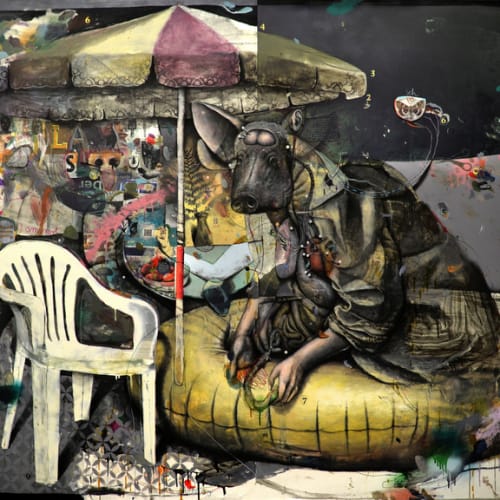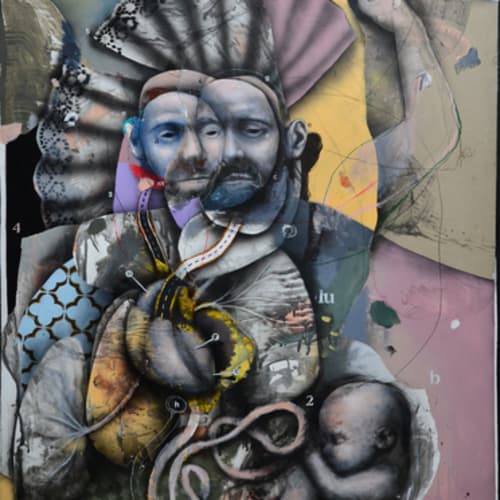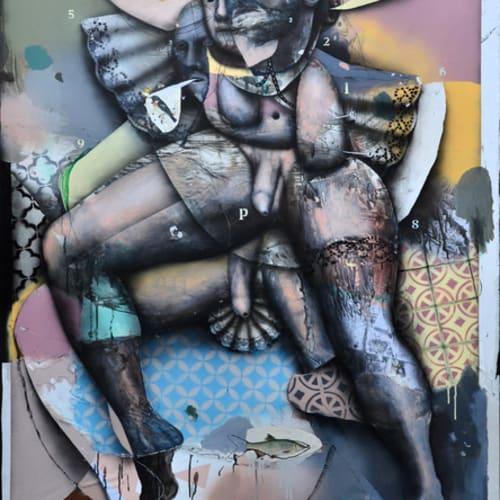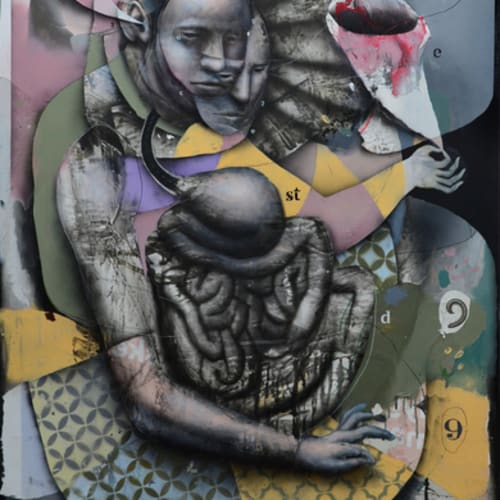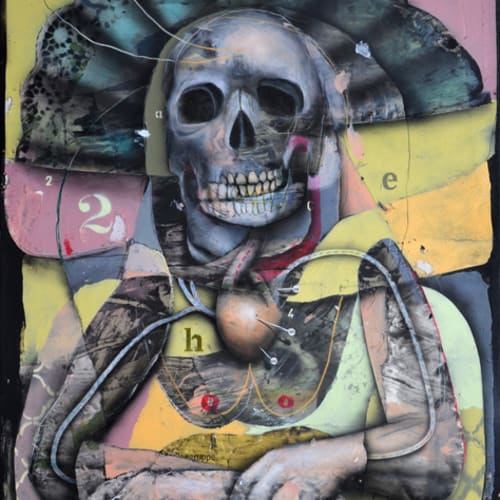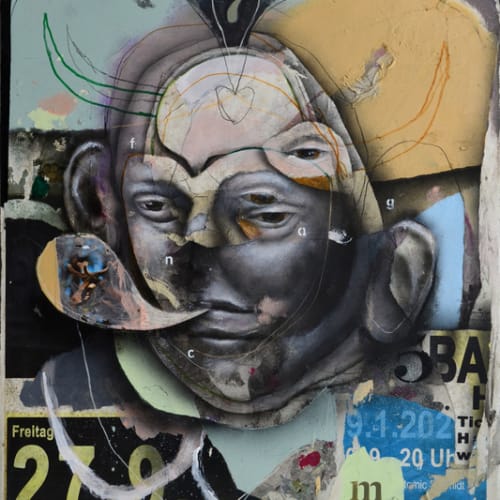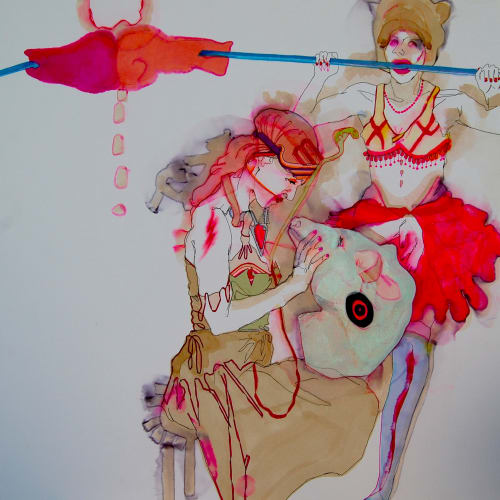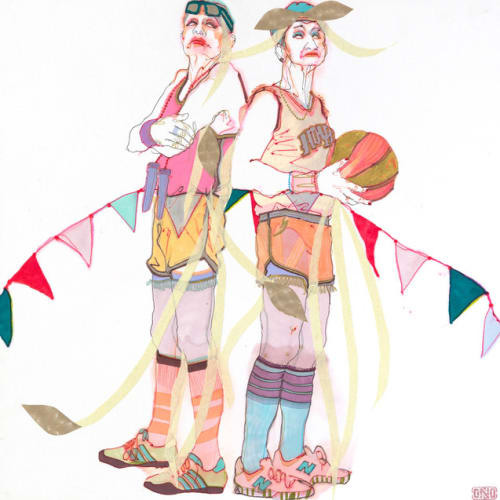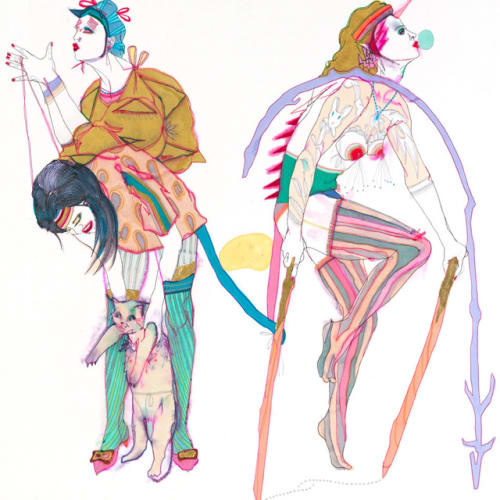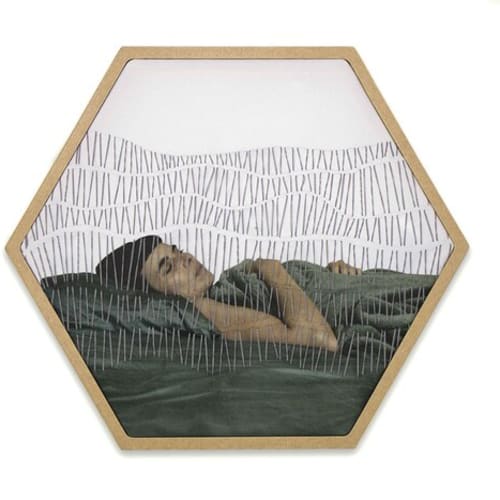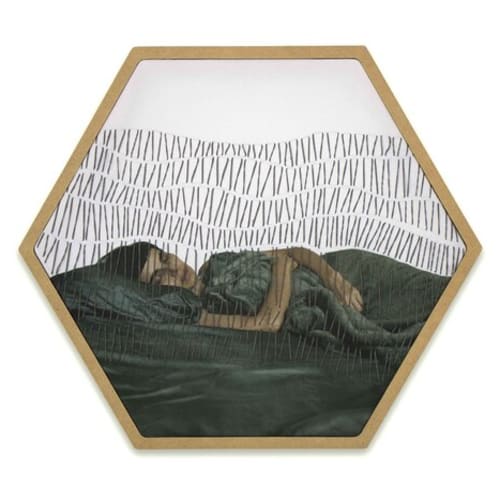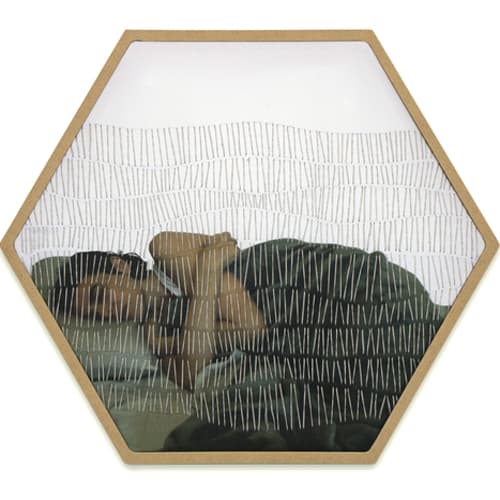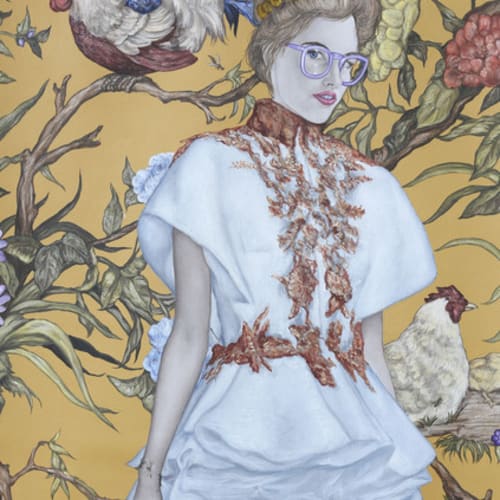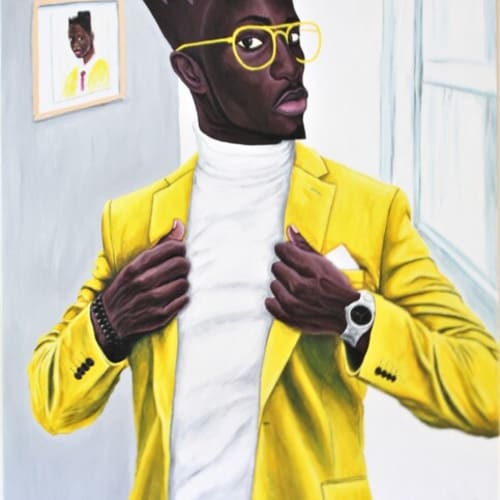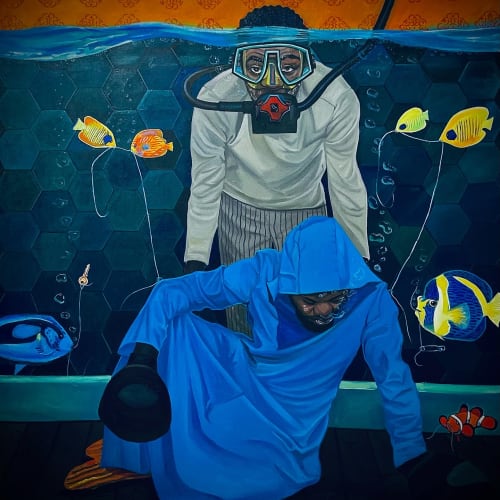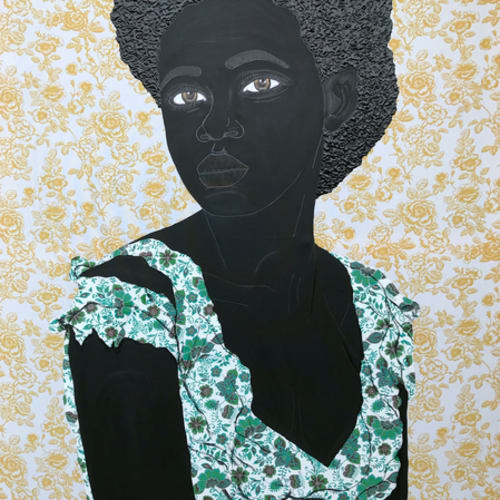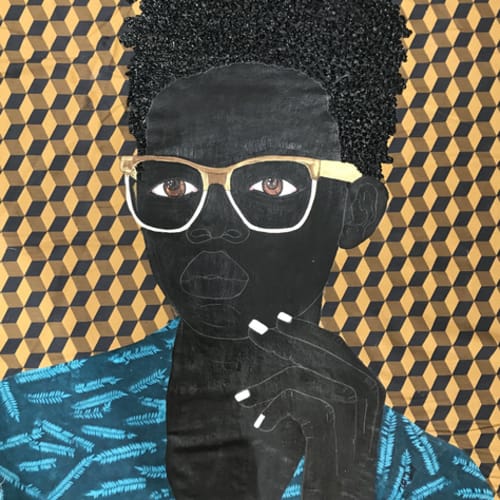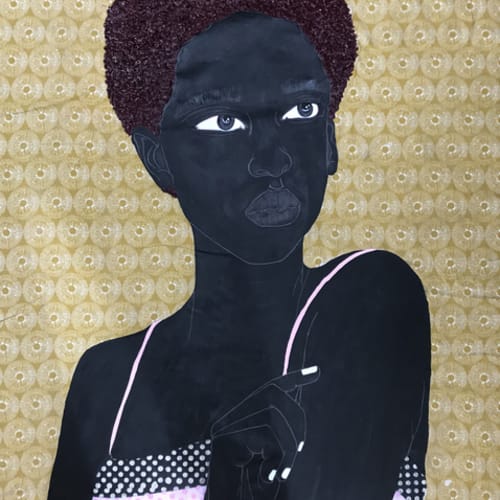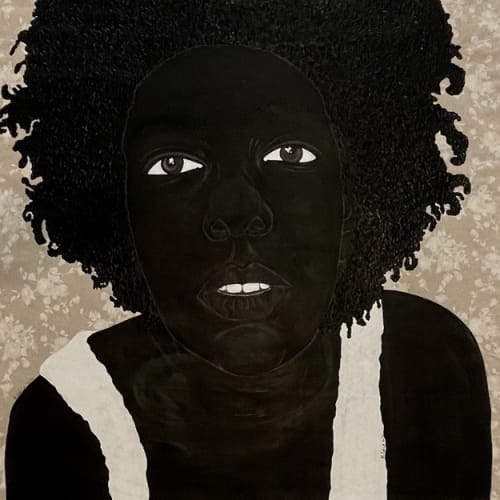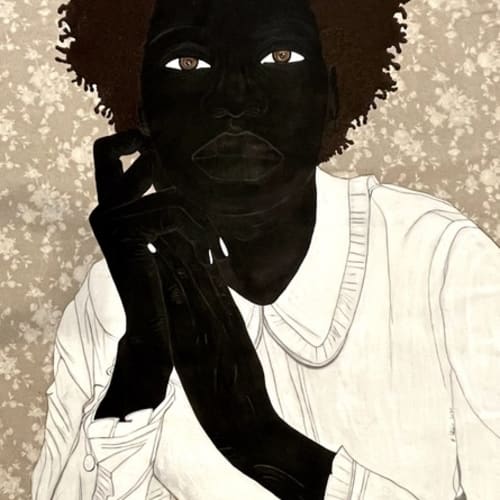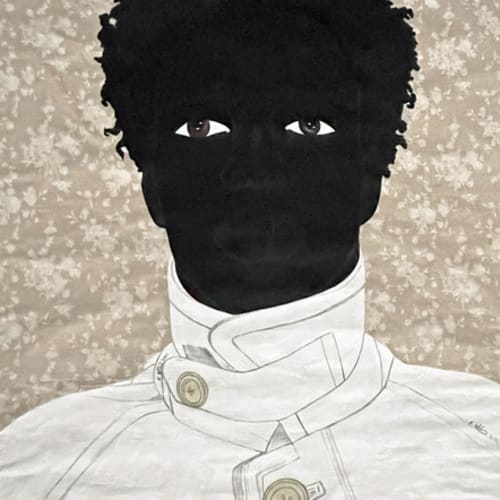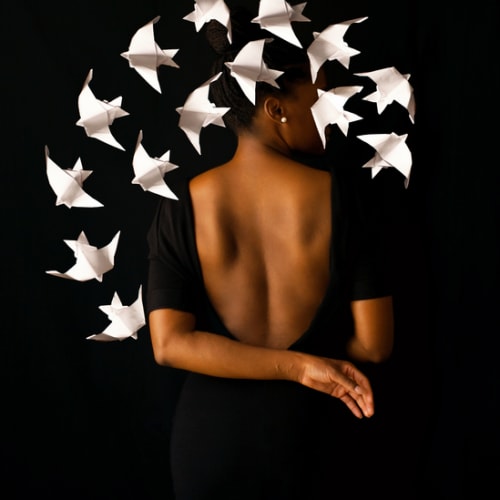 11 a.m. - 8 p.m.
11 a.m. - 8 p.m.
Join CAMP in Miami Beach at 2021's SCOPE Art Show during Miami Art Week and Basel, we'll be participating this year featuring Idris Habib, Musah Swallah, Moses Zibor, Rosana Machado Rodriguez, Carlos Gamez de Fransisco, Elena Monzo, and Bego M. Santiago.
One would think that the obsession with having one’s portrait painted was just a foray into what today is referred to as a selfie, but historically speaking, portraits served to capture more than the essence of the subject, namely their power. Initially, portraits were regaled to the wealthy, such as royals and members of the clergy. Rarely, if ever , did they feature the everyday person. The portraits were often stylized and flattering—certain exceptions exist, of course, such as Francisco de Goya’s El Tio Paquete (1819-20) which immortalizes the expression of its subject, a blind musician local to Madrid at the time, bringing forth notions of a Quasimodo-like character. It is these thoughts associated to the gentleness of such characters that in turn allow paintings such as Goya’s become considered beautiful, and it is works like this that open the door to contemporary forms of portraiture, revealing that what we often shield ourselves from and shun in everyday life is what we’re, subliminally, most attracted to.
In the present time, artists continue to paint portraits; often still stylized and glorifying either a person, or the character of a person. Many still follow guidelines of proportion set down in the Ancient world like, for example, the mathematical ratio of portioning a face: which face types fulfill this ideal; which body type; the gaze of the subject; a portrait’s setting. In the group exhibition, Here’s Looking at You: A Contemporary Kaleidoscope the artists herald from the United States, Argentina, Germany, Spain, Italy, Nigeria, and Ghana. What is interesting about this exhibition is the ways in which each represented country, so to speak, approaches the classification of the portrait with none falling into the standardized notion of exactly how a portrait should be executed. Instead, each highlights a redefining of the ideas of beauty that have informed sensibilities over time, from the classical world to modern times, in their own artistic language.
German artist Dominik Schmitt starts this discussion by co-mingling of reality and memory within breathtaking vignettes, executing exact and pristine renderings of a body, exposing anatomy and organs alongside distorted faces. Schmitt’s work evokes something reminiscent of Magic Realism, wherein the artist’s reality is memory, told in his characteristic, symbolic language. Italian artist Elena Monzo presents fluid moments captured under her brushstroke, her mixed-media pieces incorporating personal observations and experiences to form a composite of both her Italian art history but also that of Central America and, in so doing, altering the Western expectation on not only portraiture, but beauty. Argentine artist Rosana Machado Rodriguez presents self-portraits that blend photography and textile arts, using her images as a carrier for the portraits’ true subject—emotion—which she then encapsulates within a frame. Spanish video artist Bego M. Santiago also presents a self-portrait, but for her, the work is more about repetition and the concept of the mundane rather than a self-homage. Cuban-American portrait artist Carlos de Gamez Francisco dresses his subjects in highly stylized court dresses of earlier centuries and adorns them with modern props, such as sunglasses, often confusing the viewer as to the timeline of the piece. The works are a study of notions of beauty that can be traced to centuries past, playfully incorporating contemporary visuals to immortalize the innate beauty of the modern woman. American photographer Sonya Revell and Cuban-American drag artist Queef Latina take this a step further in their collaboration, Cabana Fever, which sees Queef Latina as a weary drag housewife, bored by the repetitive nature of her daily tasks and seeking more beauty and excitement in her life, in a series of glamour shots that subvert gender performance while evoking glamour of a bygone era.
When moving onto the artists from Africa, we encounter much of the playfulness of the Western artists above and across the globe, yet there is a noticeable objective quality within the works. Ghanian artist Musah Swallah celebrates the beauty of Africans in the Diaspora through the featuring of stylized hairstyles, which can be traced to connotations of status. By focusing on hair, going further as to eschew any ideals of “good hair”, Swallah graces his subjects with hair styles that can easily be likened to crowns, as if highlighting the power already present and natural within the subjects rather than asking them to conform. Nigerian artist and footballer Moses Zibor, very much in line with early works from Vincent Van Gogh, takes the everyman as his subject and shifts focus to the lives, loves, and activities of the featured subjects, whether they be in a barbershop, the supermarket, or somehow underwater. His portraits exude a vibrancy of color and activity while retaining their quality as snapshots of modern life, which can be chaotic and symbolic, but all the while still remain beautiful. Lastly, Ghanian artist Idris Habib turns back to portraiture but puts his own stamp on the practice. Habib seeks to paint his people, for his people, with the distinct purpose to align all notions of beauty into his portraits. His portraits tend to lack concrete tethers to the world, such as props or specified settings; his subjects are often a composite of facial elements, creating not an idealized or stylized rendering of a person, simply displaying an innate beauty. Often painting on fabric, sometimes waxed fabric from his travels to and from Ghana, Habib also takes markers of cultural identity found in the fabrics to reinforce his intent.
What is evident when looking at the portrait works presented in Here’s Looking at You: A Contemporary Kaleidoscope is that there is intention behind the works, and culture plays a role in the final outcome. The artists in this booth, representing 7 countries and their own pockets across three continents, utilize color and the human figure to play with notions of reality, memory, and emotion, glorifying both beauty and ugliness as the sublime. Schmitt, Monzo, Machado Rodriguez, Santiago, and Gamez de Francisco, Revell & Queef Latina do this with as much intention as Swallah, Zibor, and Habib, although it should be noted that the latter three work with a particular awareness of Blackness by ways of lived experience as Black men, especially within the historical context of the art industry, which presents a responsibility of their choosing to affirm Black beauty in tandem. All the works, regardless of where their creators call home, serve to present where we are as a society; what interests and consumes us; how we all share and experience life. These portraits value all equally, serving as evidence of our humanity taught by this kaleidoscope of artists.
We'll be at Booth D011, so stop by to see our newest exhibiting works by the featured artists.
